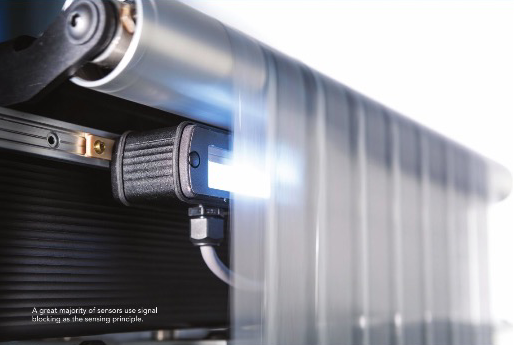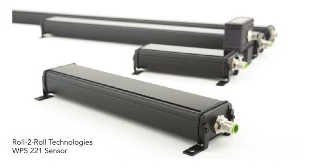Web Guides: The Evolution of Monitoring and The Need for Knowledge
- Published: October 18, 2021
By Pedro P Velasco, Chief Operating Officer at Roll-2-Roll Technologies LLC
When talking to people in the converting industry about web guiding, they will usually refer to web guides as “...we don’t think about them until they fail…”
Sadly, some people in the converting industry don’t think about them or even understand how they work. Much less, there is no real awareness of the advancements in the web guiding and monitoring technology and where they are headed. The lack of knowledge in this area can lead to less-than-optimum solutions to their problems. Consider the tenant supporting the need for web guides : “materials, machines, and processes are not perfect.” Therefore, the behavior of webs in a converting line is going to be as predictable as the materials, machines, or processes.
That’s where the need for web guides comes from. It’s important to look at the current evolution of its components and the need for knowledge of web guiding and monitoring.

Sensors
Sensors have had a major change in design and technology. A great majority of sensors use signal blocking as the sensing principle. Signal blocking requires an emitter of the signal with a receiver in an opposite position. That is the reason for the fork style or u-style sensor design that has been around for several decades.
With the commercial introduction of the light scattering sensing principle in 2014, the design of sensors made a significant change that allows placement of the sensor in spaces that fork style sensors cannot be used. The emitter and receiver of the signal are in the same arm, therefore allowing for the sensor to become a single bar with a low profile.
One characteristic that separates light scattering from other sensor technologies is that it is more a single-dimension camera than a sensor. This provides converters with an inexpensive camera-based system for guiding and monitoring the web.
Other advantages of the light scattering type of technology include:
- Elimination of sensor calibrations, as they are able to detect edges of materials without need for calibration due to changes in material conditions (porosity, opacity) or environmental conditions;
- One sensor for multiple applications such as width measurement, edge guiding, line guiding
- Wider sensing or vision range with the same resolution across the entire range allowing for the elimination of mechanical reposition of sensors when dealing with products of different widths; and
- Use in vacuum environments, as they are not affected by the vacuum, can work with transparent films, do not outgas in the vacuum container, and can provide a sensor with a low volume profile for use within the vacuum chamber.
Controllers
Controllers have advanced greatly regarding what they are capable of doing. They have two main purposes: to receive and process the input signal from the sensor, and to process that input into an output to the actuator to make the corrections on the web position.
Initial controllers just had knobs and buttons to allow the operator to adjust the input and output. These were heavy units with a significant enclosure volume. This was intended for simple edge guiding applications. But, as the converting industry advanced into more technical products, controllers had to advance to handle these modern applications. Some modern applications included center guiding, line guiding, and multiple unit control. Today, some manufacturers offer user-friendly operator interfaces with touch screens and icons that can be used across multiple languages. The future is intelligent controls that learn from the web behavior, communication to central controls in the converting machine through real-time industrial ethernet protocols, availability to store data, and remote operation and monitoring of control units through mobile devices. We are already seeing some of these advances, along with lighter and more compact units.

Actuators
Electromechanical actuators used to be relegated to smaller web guide applications. You can still see the pneumo-hydraulic systems that use a hydraulic cylinder as an actuator for applications that require higher amounts of thrust (wide web applications, terminal guides and some older narrow web guide systems).
The advances in electromechanical actuators have introduced new lines of high thrust actuators for larger loads, with good reliability and less demanding maintenance.
One of the disadvantages of pneumo-hydraulic systems is the use of hydraulic fluids. Users have to deal with pump noise and maintenance, system filtering and seals, and worst of all, leaks in the hydraulic circuit. Additionally, the hydraulic actuators do require balancing the flow of the hydraulic fluid to assure that the speed of actuation is similar in either direction.
Web guide mechanisms
Web guiding mechanisms have mostly remained the same, with some changes in roller table slides, connectors for actuators, idler rollers, and other mechanical components. The designs for displacement guides, steering guides, and unwind and rewind guides are based on mechanical fundamentals that have been tried and tested through decades in the industry. The speed with which these can react to disturbances is limited by the mechanism itself. The real advances have occurred in actuators, controls, and sensors.
Knowledge
Knowledge is probably the most neglected aspect of web guiding and monitoring. An educated customer is a great customer - they understand what process parameters are needed to determine the most appropriate application.
There are so many interesting applications in the industry. Contrast sensing for guiding using the features of the print already existing on the web eliminating the need for a printed line, width monitoring and width measurement of the web or a feature on the web, and product length measurement are just some of the many applications available. Knowing the terminology, different types of web guides and their use, or the basics of web guiding allows for a faster understanding of the need. A customer can pre-select what they need before contacting a supplier.
Knowledge of the fundamentals allows the customer or user to trouble shoot their web guiding system and determine what actions they can take. The customer needs to know these fundamentals.
About the Author
Pedro P Velasco is the chief operating officer at Roll-2-Roll Technologies LLC. He can be reached at This email address is being protected from spambots. You need JavaScript enabled to view it..';document.getElementById('cloakcfca01128f8df425938a0d3e4c52d1a9').innerHTML += ''+addy_textcfca01128f8df425938a0d3e4c52d1a9+'<\/a>';












